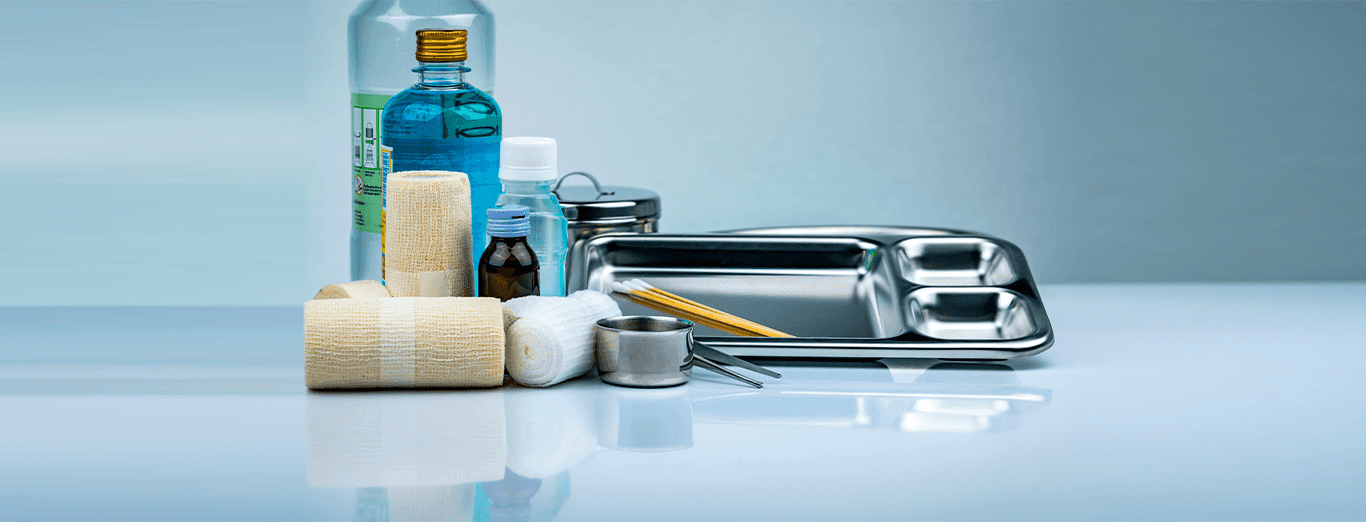
Skilled Nursing, Right at Your Doorstep
Our certified nurses provide professional medical care in the comfort of your home, ensuring you receive hospital-quality treatment without the stress of travel
Comprehensive Care Plans
From post-operative care to chronic condition management, our nursing services are tailored to meet your specific health needs, promoting faster recovery and better outcomes
Trusted Professionals, Compassionate Support
With rigorous training and background checks, our nurses are not only skilled but also empathetic, offering both medical expertise and emotional support
Patient Testimonials
what is a wound?
A wound is basically an injury to the living tissue caused by a cut, blunt shot or other impacts. Some of the wounds are superficial and is limited to the outer skin
types of wound
Wounds are effectively divided into two categories open wounds and closed wounds. Open wounds are the ones where the skin is torn, scrapped, cut or punctured, while closed wounds are those that are caused by blunt blow leading to contusion or blunt trauma. Closed wounds have internal tissue damage and bruising on the skin but no visible cuts.
The open wounds are further divided into several types namely;
- Abrasions
- Lacerations
- Puncture
- Avulsion
- Ulcerations
- Burn
wound classification
Wound classification is effectively done on the basis of their
- Superficial Wound (limited to the epidermis layer of the skin)
- Partial Thickness wound (involving epidermis and dermis layer of the skin)
- Full thickness (involving the dermis, subcutaneous fat and even the bone in some cases.
wound treatment
Superficial wounds and minor wounds can be easily treated at home by following these simple steps,
- Firstly, wash and disinfect the wound, remove all dirt and debris.
- Apply pressure to control bleeding and swelling
- Apply wound healing cream if required
- Wrap the wound using a sterile dressing or bandage
- Keep the wound clean and dry for at least 5 days for fast wound healing
- Take pain medication if required
- Take wound healing medication
- Apply ice if there is bruising or swelling.
However, you would need to see a doctor in the following case;
- The wound is deeper than ½ inch
- The bleeding does not stop
- Persistent bleeding for more than 20 minutes
- The wound is caused by a major accident.
Depending upon the severity and type of wound a doctor can use different techniques to close the wound like stitches, skin glue or wound vac, which is vacuum assisted closure of the wound. After a tetanus shot would be given in case of punctured wounds to avoid infection and septic. In some cases doctors choose not to close the punctured wound and rather just cover it with gauze to aid natural healing.
wound healing
Wound healing is the complex process, where the skin and tissues repair themselves after the injury. Wound healing is also a fragile procedure that is susceptible to infections and interruptions that lead to non – healing chronic wounds. Effective wound care facilitates the healing process leading to speedy recovery.
Stages of Wound Healing
Wound healing is effectively divided into 4 stages of predictable biochemical events that lead to the repair of the skin tissue, namely –
- Haemostasis or blood clotting – This is the first stage of wound healing and the blood clotting leads to the prevention of further bleeding.
- Inflammation – This is the second stage of wound healing, here the white blood cells eat the dead cells and debris by engulfing it and platelets derived growth factors are released into the wound.
- Proliferation or growth of new tissue – This is the third stage of wound healing and at this stage new tissues are formed and the wound is contracted in size
- Maturation – This is the final stage of wound healing and here the collagen is realigned along tension lines and that are no longer required are removed through apoptosis.
wound dressing
A wound dressing is a sterile pad which is applied on a wound to protect the wound from further harm and infection and also aid the healing process. A wound dressing depends upon the type of wound and no single dressing is suitable for all types of wound. There are more than 3000 types of dressing. The main types of wound care dressing are;
- Hydrocolloid – This type of dressing is used on burns, necrotic wounds, venous ulcers
and pressure ulcers - Hydrogel – This type of dressing is used for necrotic wounds, donor sites, second degree
and higher burns and in wounds with little to no excess fluid - Alginate – This dressing is used for pressure ulcers in stage III or IV, venous ulcers, etc.
- Collagen – Collagen dressing is used for chronic or stalled wounds, surgical wounds, transplant sites, etc.
how can we help?
Many deep and severe wounds require regular wound care, dressing and medication to effectively heal and for such procedure a patient is not hospitalised and is rather advised to seek wound care at home. Coming to the help of such patient is our at home healthcare service through which a qualified nurse would come visit you at your home and provide efficient wound dressing at home. So if you are looking for wound dressing at home, just give us a call and our representative nurse would come visit you in a short time.
References
Doctor Consultation
Nursing
Physiotherapy
Trained Attendant
Elder Care
Mother & Baby Care
Lab Tests
Medical Equipment
Speciality Pharma
Critical Care




